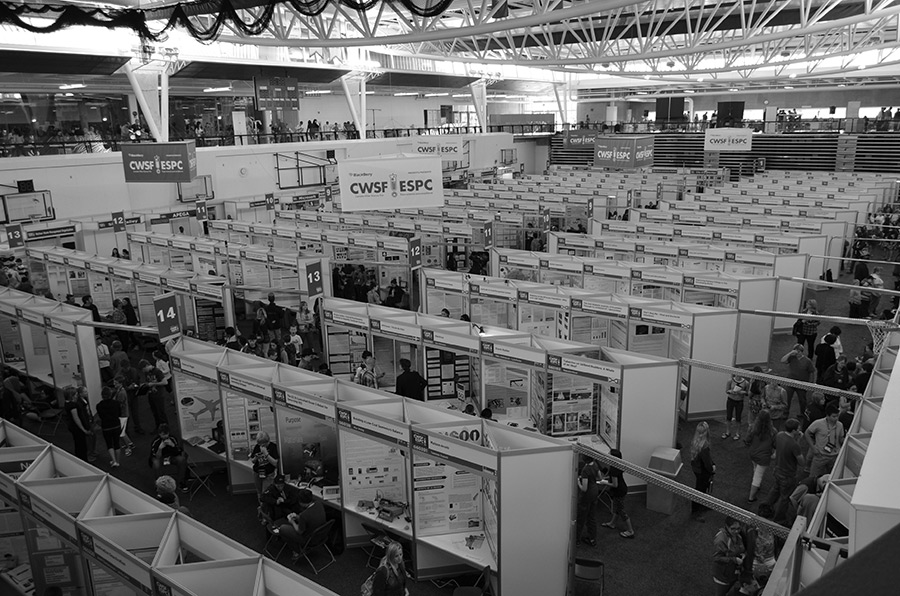Judging the Canada-Wide Science Fair
It was a tremendous honour to participate in the Canada-Wide Science Fair not only with the responsive drawing project, but also as a judge. This was a glimpse into a new process in a different discipline, and I walked away from judging day impressed and exhausted. I keep trying to think of similar examples of this in the visual arts- where experts and students come together and focus so intently, and seriously engage the public about their discipline.
There were 481 projects and around 340 judges. During our trainings, organizers reinforced that the purpose of the science fair is to encourage students to continue to pursue science, to keep experimenting and to keep studying. The message was that judging is a mentorship experience, and that positive interaction is of the highest importance. Judging consisted of a series of one-on-one interviews by a series of judges– each project was visited individually by at least four judges. The end result was a full day of creative focus and intent, from judges and participants alike, seriousness and creativity and discussion and commitment. It was fantastic to witness. It was also incredibly efficient, considering that so many of us not only had to judge the projects, but also learn the judging system quickly.
In both the morning and afternoon judging sessions, I was a team leader, which meant I had to help bring two judging groups to consensus and be responsible for filing the results of our group. Our task was to reach consensus, not judge by majority. Being left of the discipline helped in this case, I believe, because I had no bias– I had to listen to the experts talk it out and try to ask questions which brought everyone to the point. Tight timeframes helped in this regard. It was extraordinary what was accomplished in one day.
